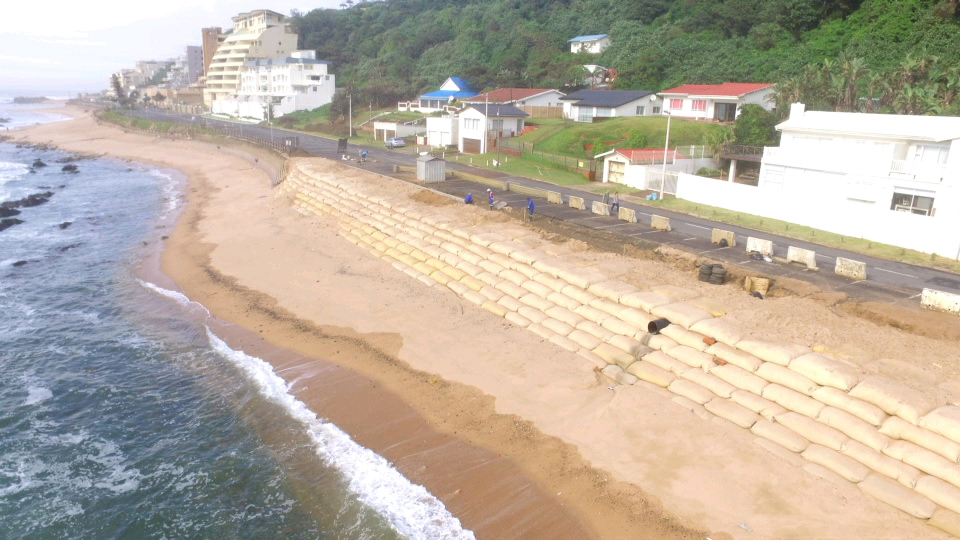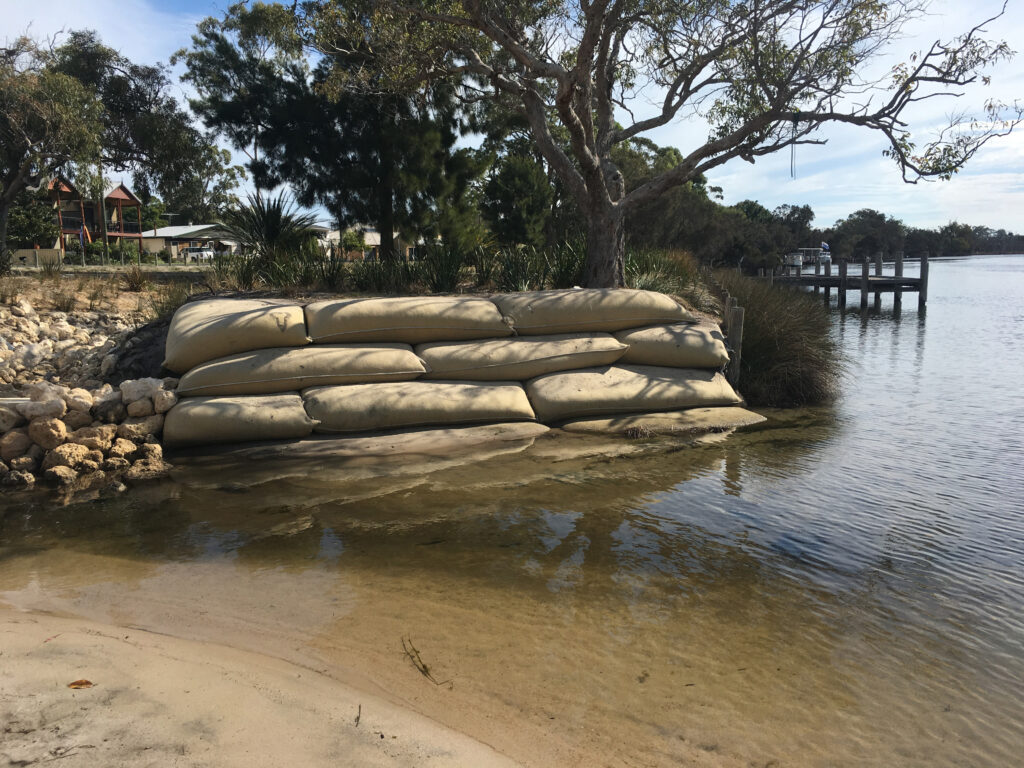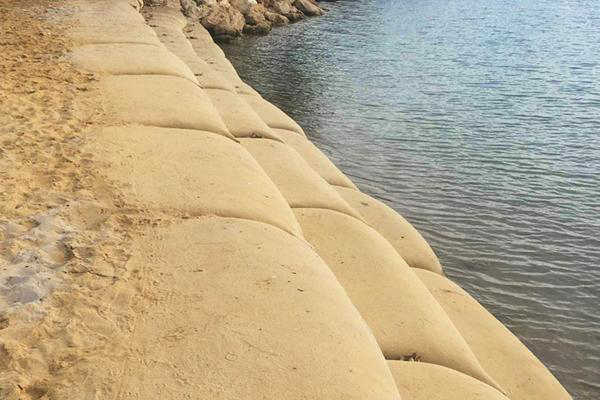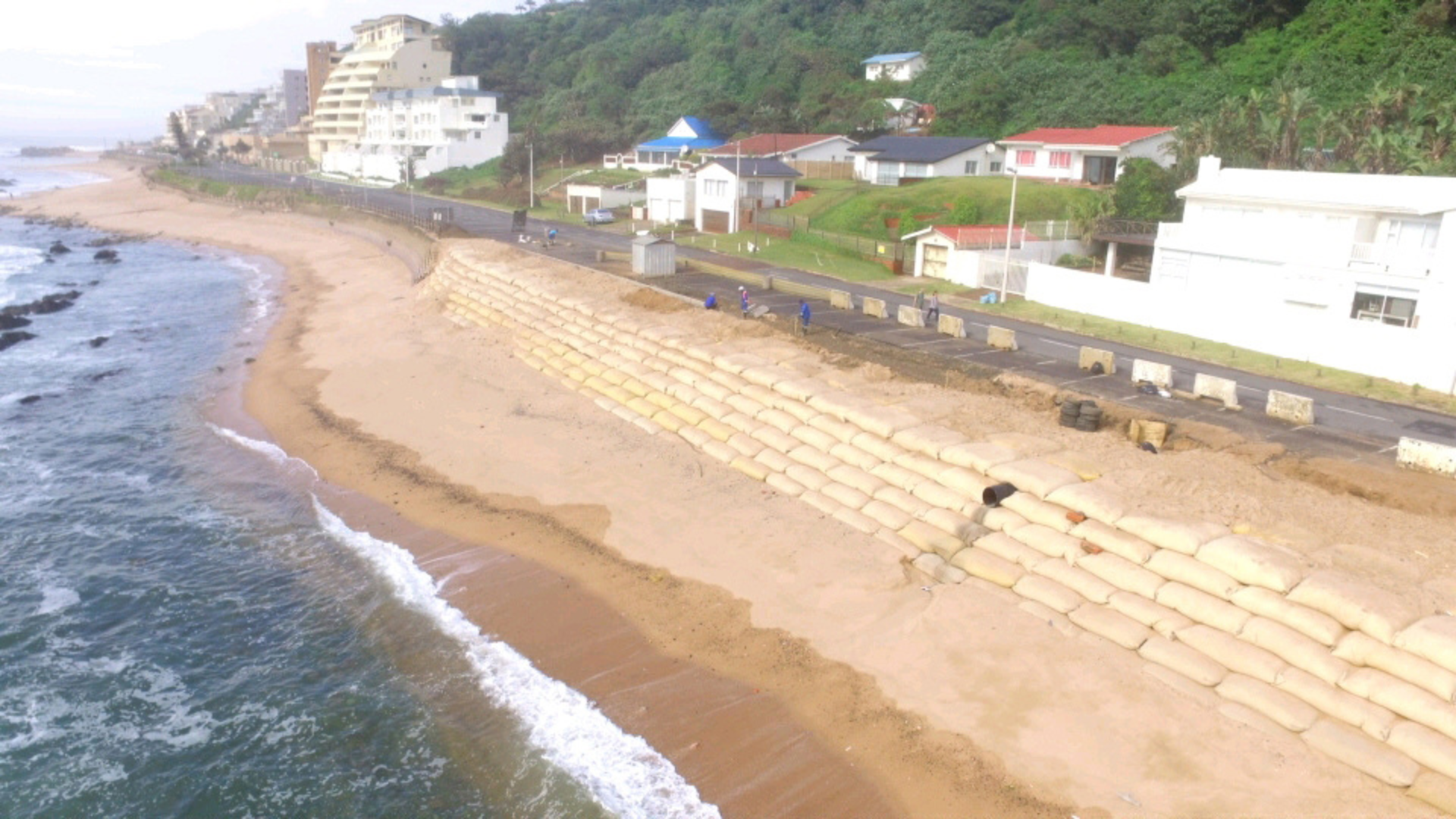Global research shows that rising temperatures, caused by climate change, are altering our normal weather patterns, affecting coastlines, homes and infrastructure, as well as animals and plants, all over the world. Global warming is increasing the frequency and intensity of storms, leading to disastrous flooding, which is intensified by rising sea levels. The effects of climate change on our environment will depend on how well we can adapt to ever-changing weather patterns and how much we can do to reduce global warming.
“We need to boost initiatives to protect our natural environment and keep coastal areas safe and attractive for everyone to enjoy for many years to come. The installation of well-engineered and durable coastal protection structures has never been more critical,” says Sefton Fripp, Managing Director, Fibertex SA, specialists in the manufacture and support of nonwovens and performance-based materials. “In addition to coastal rehabilitation, authorities need to look at ways to preserve the integrity of concrete structures that are affected by salt water, high temperatures and increased CO² levels and consider eco-friendly solutions that gently prevent soil erosion.
“South Africa needs to do all we can to prevent damage on our shorelines, to reinforce rivers and stop devastating flooding of populated areas. “The Fibertex team, with decades of experience in coastal protection, works closely with authorities around the world designing advanced ecological solutions to protect shoreline areas and save buildings and infrastructure.
Coastal protection
Ageing seaside infrastructure, large waves and narrowing beach widths, all contribute to the urgent need for coastal rehabilitation, to ensure greater environmental protection. Eco-friendly Fibertex products have been developed to withstand the effects of harsh wave action and are the perfect protection solution that allows beaches to retain their natural beauty. The company manufactures FiberRock® Geosynthetic Sand Containers (GSC’s) which are used in the construction of efficient protection structures for coastal protection, erosion control, dune revetments and slope stabilisation, as well as for emergency protection in floods.
According to Fibertex specialists, using large sandbags as structural components of revetments is not a new trend in environmental protection, but the global Fibertex operation has made a substantial investment to design and manufacture the robust but soft FiberRock® GSC system, as an alternative to conventional rigid revetment structures. The function of the lightweight and workable GSC system is to allow the free passage of water through the porous structure of the fabric and into the sand it carries, to absorb wave energy, while retaining the sand fill in the bag. This is unlike hard concrete structures, which predominantly protect by means of wave energy reflection, which could most likely have a negative long-term impact on adjacent structures.
FiberRock® GSC’s consist of a strong porous base fabric, which is mechanically needle-punched together with a coarse anti-abrasion and vandal resistant (AVL) cover layer. This durable fabric combination offers a flexible structure designed to retain a course fill medium – like sand – while allowing the free passage of water. FiberRock® geotextile sand containers, which are manufactured from highly UV stabilised virgin Polypropylene (PP) fibres, can withstand the effects of repeated wave attacks in harsh coastal environments and are the perfect soft solution to beach rehabilitation and coastal protection.
The Fibertex team has given particular attention to critical factors in the development of this system, including abrasion, perforation, puncture and UV resistance, as well as tensile strength, elongation, permeability and drainage. GSC material selection is critical to the long-term stability of the entire structure. In the case of coastal protection applications, where high energy bi-directional flow conditions are encountered, needle-punched staple fibre (SF) geotextiles are preferred. They have proven to be durable and the staple fibre geotextiles do not delaminate under the harsh flow conditions expected from wave action.
Fibertex has selected virgin Polypropylene fibre, with excellent frictional and low density characteristics, as the basis for manufacturing its GSC fabrics. Polypropylene has better performance to weight ratio than other more dense polymers, such as Polyester. Although Polyester is a strong, durable polymer, Polypropylene is preferred globally in the manufacture of heavy grade/voluminous GSC fabrics. Other important properties for appropriate product selection include the design of the revetment structure, where environmental influences such as wave velocity, wave amplitude, wave period and wave direction need to be considered.
Size selection of GSC’s for each application is also critical. Smaller GSC’s might be sufficient for less harsh conditions, but direct wave attacks often require a larger, more stable FiberRock® GSC’s. The correct installation procedure and optimal filling and closure of GSC’s prevent free movement of the bag, to ensure the long-term stability of the structure.
Fibertex GSC’s, which are available in sizes between 200 kg and 4 000 kg, can be used in riverine, lagoon and coastal protection works, depending on specific environmental and engineering requirements of the designed structure. The Fibertex team is currently working on a project in Umdloti, KwaZulu-Natal, to repair recent damage to the beach front embankment, which was damaged by tidal waves and heavy rain fall.
Most of the embankment eroded during the storm, leaving the main road above the bank vulnerable to collapse. The scope of the project is to rehabilitate the area and prevent tidal waves from creating further damage. The solution is to install FiberRock® GSCs that will provide permanent retaining support to the embankment and barrier protection against tidal waves. In addition, this structure will create a coffer dam to prevent waves from causing further damage and protects the working area. Fibertex SA has supplied FiberRock® GSC’s for many local projects, as well as large scale revetment structures in Africa, the Indian Ocean Islands, as well as in Europe and Australasia.
Durability of concrete structures
Degradation of concrete structures is normally accelerated by the effects of salt water, high temperature and increased CO² levels in the air. Traditional formwork is impermeable to air and water, which leads to water and air migrating to the interface between the formwork and concrete. The result is an increased water/cement ratio in the cover region, where air bubbles also become entrapped and lead to the development of pinholes.
The use of an innovative material like Controlled Permeability Formwork (CPF) liners could potentially double the lifetime of a concrete marine structure, by improving the quality of the covercrete. The main functions of Formtex® CPF liners in coastal applications, including harbours and ports, are to improve the durability of a concrete structure, to extend its service life and reduce maintenance costs. Typical applications for this material in harbour infrastructure, include wharfs, bridges, tunnels, precast concrete units and marine structures. Apart from harbour projects, these liners are also used in water treatment plants, drinking water tanks, as well as dams and sluices.
Formtex is a two-layer CPF liner, consisting of a drainage layer that allows water and air to escape and a filter layer with a pore size designed to retain cement particles. When surplus water and air is drained from the surface of the freshly poured concrete during compaction, the water/cement (w/c) ratio in the concrete cover is reduced. This results in a denser and stronger concrete, with a blemish-free surface. Formtex CPF liners, which are suitable for the rounded shape of concrete elements, are used in the casting of bridge pillars and bridge spans, to ensure high quality, durability and low maintenance of the concrete elements that need to withstand highly aggressive environments.
Formtex also reduces the formation of blowholes and other blemishes on the concrete surface that normally require extensive deburring after the formwork is removed. The smooth, dense and strong concrete cover is dust-free and because there are no release agents, it is an ideal prepared base for further surface treatment or coatings. Formtex CPF liners, which reduce micro bacterial growth, are a highly efficient alternative to slip agents for fresh water supply structures. CPF liners also minimise the penetration of graffiti media, making it easy to remove from a surface.
Formtex is designed for tensioned, glued or self-adhesive mounting to vertical or inclined surfaces. Once Formtex is attached, concrete casting is performed as usual. These liners can easily be removed from the concrete during formwork striking. Formtex has been used in iconic structures like the Sheikh Jabar Al Amad Causeway in Kuwait and Hangzhou Bay Bridge in China.
High-performance Fibertex materials – which comply with stringent quality, environmental and health specifications – play an important role in specialist sectors, including acoustics, automotive, bedding, building, composites, concrete, filtration, flooring, furniture, geotextiles, medico and wipes.
The Fibertex geosynthetics range encompasses nonwoven and woven geotextiles, gabions and mattresses, drainage pipes and fittings and erosion control and cellular confinement solutions. The company also supplies soil reinforcing products, including geogrids and geocells, as well as geosynthetic clay liners as part of composite lining systems in modern landfills. Fibertex is the largest manufacturer of UV stabilised virgin PP (polypropylene) nonwoven geotextiles produced in Africa, with certification for durability of over 100 years, in accordance with the latest EN standards.





